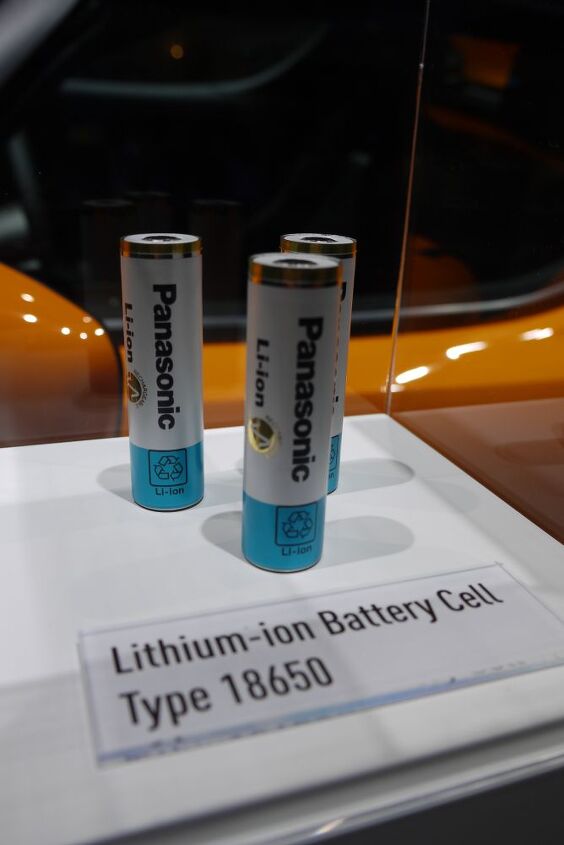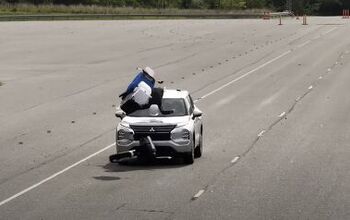Tesla Awards Panasonic 4-Year $7 Billion Battery Cell Contract Anticipating 500% Increase in Production
Tesla Motors has used exclusively Panasonic lithium ion battery cells since it started selling electric cars. 2010 photo.
Panasonic Corp., which already is the largest supplier of lithium ion batteries for the electric car industry, has announced that it has signed a new contract with Tesla to supply battery cells for the Model S and upcoming Model X electric vehicles. The Japanese company will supply 2 billion 18650 form factor lithium-ion cells worth up to $7 billion over the next four years. Panasonic has been Tesla’s exclusive supplier of battery cells since it started selling its first EV, the Tesla Roadster.
Since Tesla has used 200 million cells over the past two years, the contract indicates a significant ramp up of production is planned, a five-fold annual increase. Tesla has said that it expects to deliver about 21,000 Model S cars this year and that the Model X crossover will go on sale at the end of 2014.
More by TTAC Staff
Latest Car Reviews
Read moreLatest Product Reviews
Read moreRecent Comments
- Lorenzo This car would have sold better if there was a kit to put fiberglass toast slices on the roof.
- Lorenzo The Malibu is close to what the 1955 Bel Air was, but 6 inches shorter in height, and 3 inches shorter in wheelbase, the former making it much more difficult to get into or out of. Grandma has to sit in front (groan) and she'll still have trouble getting in and out.The '55s had long options lists, but didn't include a 91 cubic inch four with a turbo, or a continuously variable transmission. Metal and decent fabric were replaced by cheap plastic too. The 1955 price was $1765 base, or $20,600 adjusted for inflation, but could be optioned up to $3,000 +/-, or $36,000, so in the same ballpark.The fuel economy, handling, and reliability are improved, but that's about it. Other than the fact that it means one fewer sedan available, there's no reason to be sorry it's being discontinued. Put the 1955 body on it and it'll sell like hotcakes, though.
- Calrson Fan We are already seeing multiple manufacturers steering away from EVs to Hybrids & PHEVs. Suspect the market will follow. Battery tech isn't anywhere close to where it needs to be for EV's to replace ICE's. Neither is the electrical grid or charging infrastructure. PHEV's still have the drawback that if you can't charge at home your not a potential customer. I've heard stories of people with Volts that never charge them but that's a unique kind of stupidity. If you can't or don't want to charge your PHEV then just get a hybrid.
- AZFelix The last time I missed the Malibu was when one swerved into my lane and I had to brake hard to avoid a collision. 1 out of 5⭐️. Do not recommend.
- 2ACL I won't miss it; it was decent at launch, but in addition to the bad packaging, GM did little to keep it relevant in the segment. I'd prefer that another domestic automaker doesn't just give up on the mainstream sedan, but unlike some of Ford's swan songs, the Malibu made an indifferent case for why they should live.



































Comments
Join the conversation
2,000,000,000 batteries is about 300,000 Tesla Model S/X thats an interesting ramp from circa 25,000 per year for 2013
Good for Panasonic! Good for Tesla! I am continually-amazed by the capabilities of those Panasonic lithium-Ion batteries. My Dewalt battery-powered drills have them, and they have opened up an entire world of home remodeling and hand man activity that was simply absent from my experience.